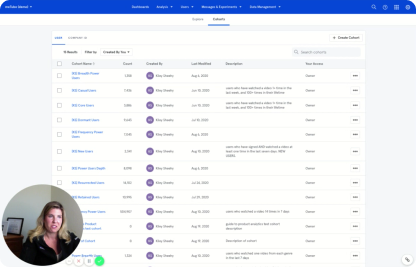No analytics guide would be complete without talking about growth. And perhaps you’re on the Growth team at your company and skipped ahead to this chapter without reading the part for PMs. You want the details on how to hack growth. We’ve got news for you: growth for the sake of growth doesn’t work.
When you talk about Growth, you are obviously referring to the growth of your company. This concept shows you just how easy it is to pull focus from user value toward your own self-interests. If the Product team is focused on bringing value, then the Growth team should align with that as closely as possible.
How do you measure growth?
How should your growth strategy
change as your company matures?
If the goal of Product is to create value, the goal of Growth is to identify all the people out there who can benefit from the value that your product brings. At an early startup stage, it will likely be a very small, niche audience. When you reframe growth in this way, demand generation becomes less about convincing an unwilling crowd to buy your product and more about showing people that your product can bring value to them or alleviate some friction in their lives.
When you find your product-market fit, measuring growth and value becomes even more important. Given the costs of ads and the fracture of channels and media, a core challenge will be to scale your reach beyond the niche market you’ve already captured. At this point, you’ve hopefully collected enough data that will guide your acquisition in terms of who those users are, where to find them, and how to educate them about your product’s value. Product analytics will help you stay the course and spend your budget efficiently.
How can a product manager drive growth?
Beyond acquiring users, the key to growth is retention. Similarly to how in its early days Facebook found that adding 7 friends in 10 days was their shortcut to value, you can use product data to identify your product’s unique ancillary action that increases the likelihood of retention.
This only comes with having a clear idea of the foundations laid out in this Guide (e.g., value moment, user journey, product usage interval) and then regularly asking questions in terms of what else users are doing (frequency, depth, breadth) that are the behavioral markers for long-term loyalty. If you do find that shortcut, you can nurture new users in their critical early stages to reach value quickly and maybe even spread word of your product’s value organically, thus creating a self-feeding loop.
In this section on growth, we’ve repeated the importance of educating potential users about the value that your product can bring. The tricky part is that, out in the wild, it is hard to distinguish a potential user from a person who has no use for your product. The previous chapters focused on how to break down users based on behavior since, as a PM, you have the ability to influence user actions (and ultimately find that magic shortcut to value).
Where are my most valuable
users coming from?
With Mixpanel, you can segment users based on their source and find or confirm whether you are targeting the right group. In the Funnels report, you can compare conversion rates and see where your engaged users are coming from. Organic traffic? Google Ads? LinkedIn? Best case: you find that your targeting criteria on Twitter ads are spot on and you double down. Worst case: you find that the bought users find less value (because they don’t retain) than the organic users or users from other sources, so you modify the targeting criteria for your ad audience.
Growth is about finding people who need your product and showing them that your product can bring value to them. Product analytics can help you see the impact beyond vanity metrics (like email open rates or pipeline) so you can focus on what really matters: serving the user.
![pa-img05[1]](https://mixpanel.com/wp-content/uploads/2020/09/pa-img051-1.png)






